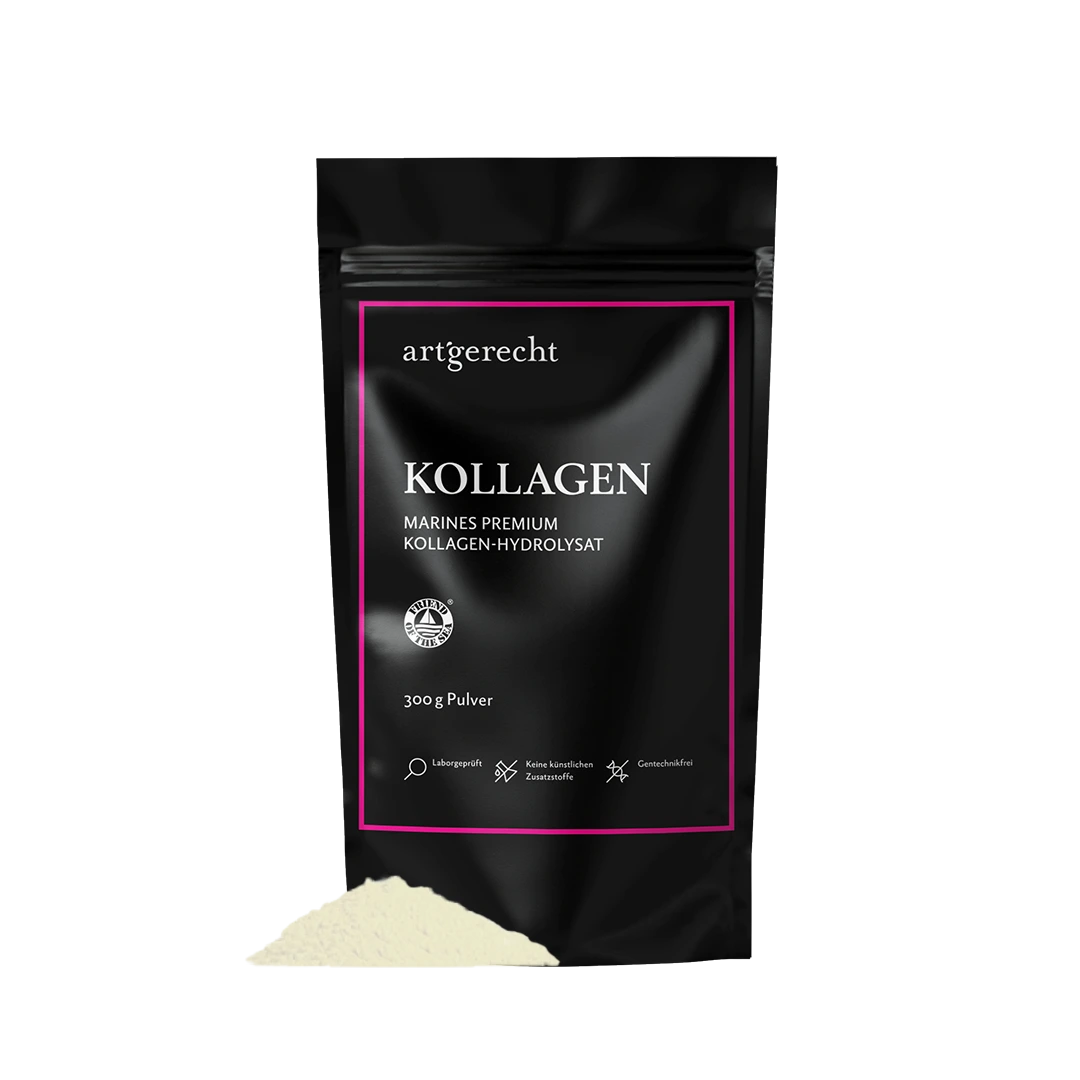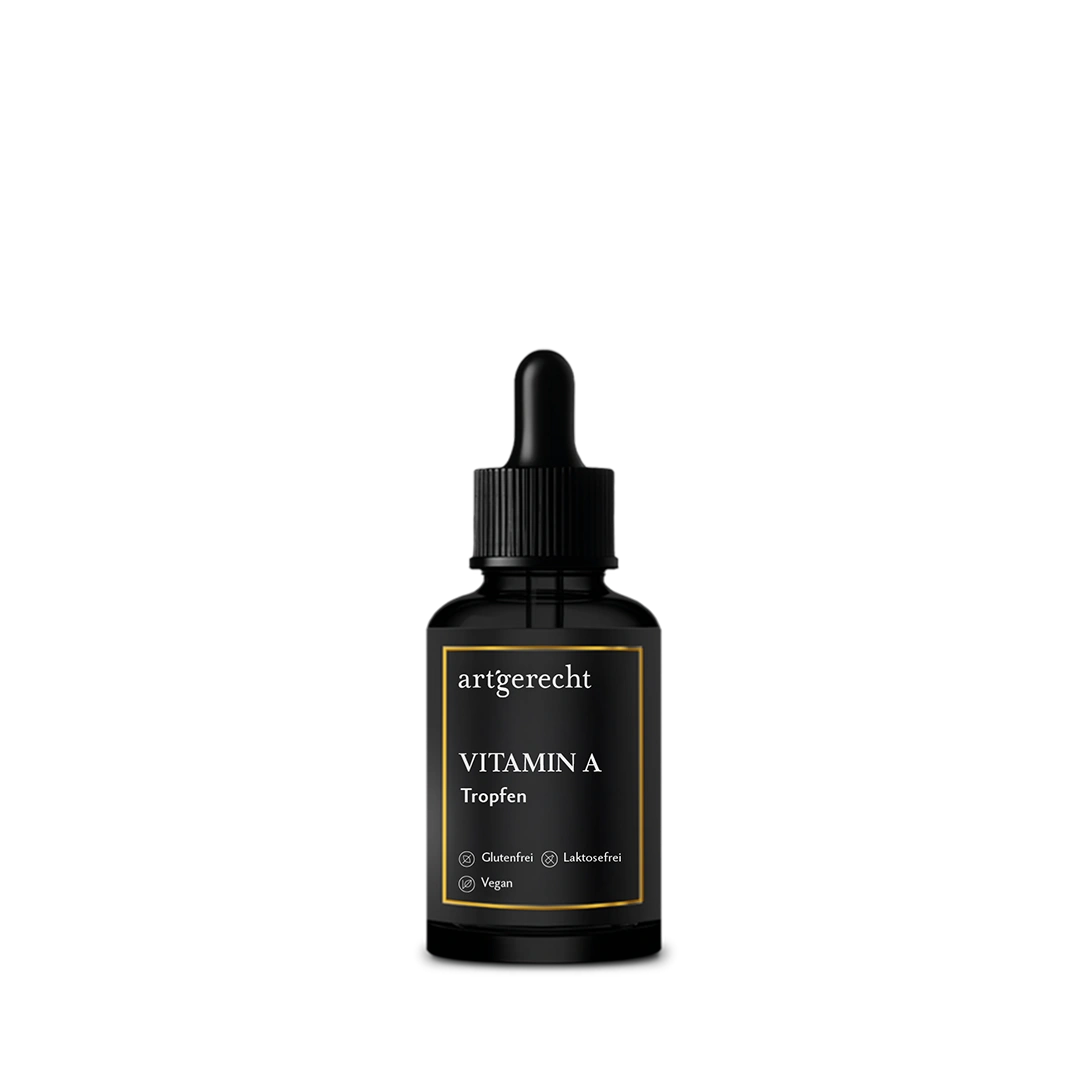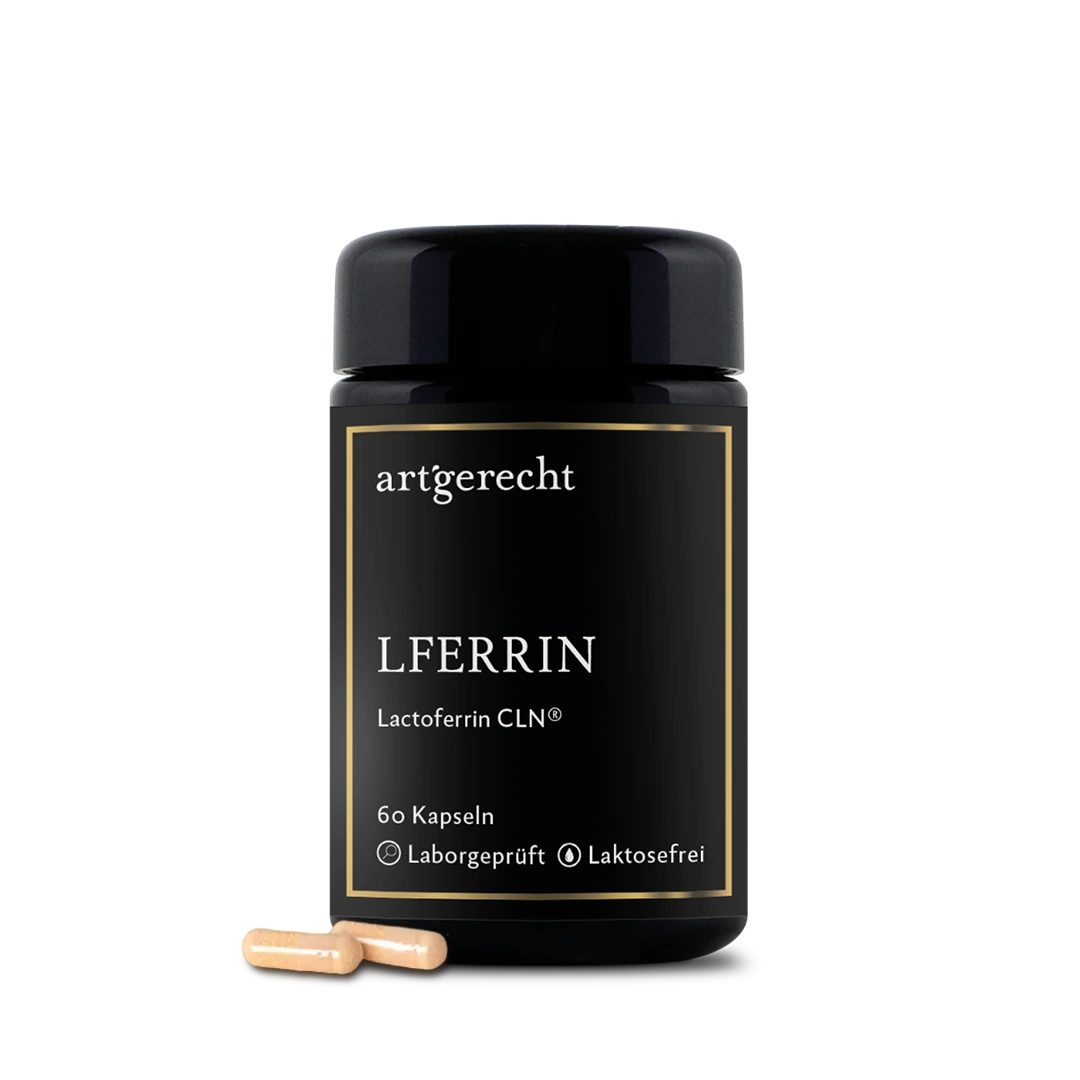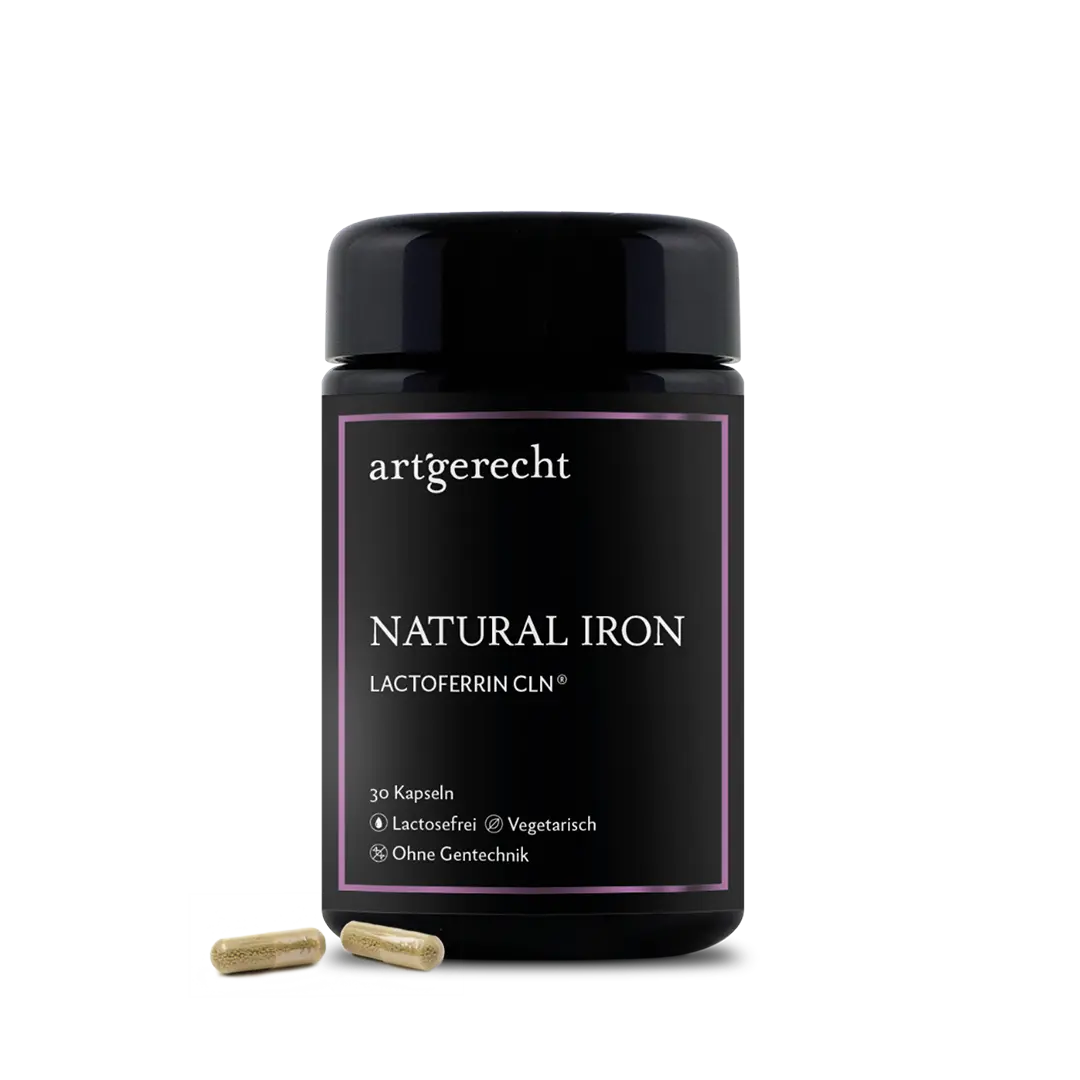- What is the cuddle hormone?
- Why is oxytocin also called the cuddle hormone?
- Interpersonal relationships – that's why they are so important (immune system)
- Why is oxytocin important for our health?
- How can I increase my oxytocin level naturally?
- Maintaining social relationships: 3 tips
- Oxytocin – the „fairplay“-hormone
- Recipe inspiration
- Literature:
Cuddling is not only good for our well-being, but also has many other positive effects on our health. The hormone oxytocin, which is produced when we have close physical contact, plays an important role in regulating the immune system, reduces stress, promotes social behavior and has an anxiety-reducing effect.
What is the cuddle hormone?
Oxytocin is primarily known from pregnancy, because functions such as the stimulation of contractions during birth and the release of milk to the child are controlled by oxytocin in the mother. It also strengthens the mother-child bond and changes the pregnant behavior towards the newborn. [1]
The cuddle hormone ultimately has a significant influence on our behavior in the world around us. As oxytocin levels rise, social sociability increases and bonds are strengthened - not only in relationships, with family and friends, but also with strangers. In addition, social communication increases and the empathy capacity in men is improved. [1] [2] Oxytocin also plays a role in the development of trust.strong>trust plays an important role [3], which is why it is often [3]used in the development of trust.This is why it is often associated with terms such as „calmness“ and „love“ and is referred to as the „love hormone“. [2] This also has effects on our love life, because oxytocin increases romantic attraction and helps to promote fidelity in monogamous relationships.[4] In addition, an increased oxytocin level also reduces anxiety.[5]
Why is oxytocin also called the cuddle hormone?
Oxytocin is also known as the cuddle hormone because it is produced through skin-to-skin contact (skin to skin). This is particularly important for children, as closeness to the mother and, of course, the father reduces stress levels enormously. This is also used therapeutically for babies who often have no direct contact with their parents in an incubator. Here, just 60 minutes of daily body contact is enough to improve the child's development and significantly reduce the parents' anxiety.[6]
Interpersonal relationships – that's why they are so important (immune system)
Interpersonal relationships have a significant impact on our oxytocin levels. If we spend a lot of time in a community, enjoy our partnership and experience a lot of close physical contact as a result, our oxytocin levels rise. [3] [7] This is of great importance for our immune system, as oxytocin plays an important role in the regulation of immune functions.strong>regulation of immune functions[8] and has an inflammatory effect. [5] Especially in our modern society, oxytocin can have an influence on the „cause of the causes“ of many diseases of civilization: the chronic low-grade inflammation .[9] In addition, ageing processes are also accelerated by chronic low-grade inflammation and benefit from oxytocin.[10]
Why is oxytocin important for our health?
The answer is yes. The special thing about forest bathing is that you don't need any special equipment, clothing, medication or therapy concepts to achieve a positive effect. Studies have shown that even the mere sight of a natural image, such as a tree, can reduce our stress levels[2]. So let's not make it any harder than it is and follow the first basic rule of forest bathing: there are no rules. The forest is a place where you are allowed to be human, without any thoughts of performance. It doesn't matter how far or how fast you run or whether you run at all. It's more about leaving everyday life behind you, switching off and enjoying the peace of the countryside.
However, if you want to specifically improve illnesses, you should first find out from a professional guide what information is available from research in order to benefit more from forest bathing.
So the solution for a healthy life is a little more love, peace and trust?
How can I increase my oxytocin level naturally?
As already described, it helps to maintain regular positive social contacts, to enjoy a meal in good company, to have a little more fun and to be more active.cuddling a little more, loving and practising the most beautiful secondary thing in the world to increase oxytocin levels. Unfortunately, you don't always have a partner to share this with or you suffer from tensions in your social environment. But there are of course many more ways to stimulate oxytocin production. From yoga [12] [13] and various forms of meditation [14] über soothing music [15], warm temperatures [16], massages [17] and keeping dogs and other pets [18] there are many possibilities.
Maintaining social relationships: 3 tips
- Eye contact instead of body contact. Look deeply into the eyes of a loved one for 5-10 minutes and let it work. This increases the release of oxytocin.
- With your partner: nude cuddling also increases the amount of oxytocin and calms you down.
- Create quality time: Have conversations together and make plans about future goals, trips and developments.
Oxytocin – the „fairplay“-hormone
A very exciting and easy-to-implement intervention is intermittent drinking. Mild thirst also stimulates the production of oxytocin. This is not about reducing the amount of water, but simply the frequency. Because if you have developed a mild thirst, you should drink as much liquid (and that means preferably water) until the feeling of thirst subsides. Interestingly, this drinking behavior can be seen in wildlife, infants and all other mammals. Only the adult, „westernized“ human being is an exception here. In nature, oxytocin is a kind of „fair play“-hormone, because it allows carnivores and herbivores to stand at the waterhole at the same time without hunting behavior setting in and the „weaker ones“ not daring to approach out of fear. Intermittent drinking is therefore one of the most effective ways to improve social behavior and social bonding, reduce stress, reduce anxiety, regulate appetite and reduce inflammation.[5]
Recipe inspiration
A delicious, socially acceptable recipe for the next coffee round: banana bread.
Literature:
- Maejima, Y., Yokota, S., Nishimori, K., & Shimomura, K. (2018). The Anorexigenic Neural Pathways of Oxytocin and Their Clinical Implication. Neuroendocrinology, 107(1), 91–104. https://doi.org/10.1159/000489263
- Esch, T., & Stefano, G. B. (2005b). The neurobiology of love. Neuroendocrinology Letters, 26(3), 175–192. https://doi.org/10.2174/157340005774575037
- Esch, T., & Stefano, G. B. (2011). The neurobiological link between compassion and love. Medical Science Monitor, 17(3), 21. https://doi.org/10.12659/msm.881441
- Marazziti, D., DellOsso, B., Baroni, S., Mungai, F., Catena, M., Rucci, P., … DellOsso, L. (2006). A relationship between oxytocin and anxiety of romantic attachment. Clinical Practice and Epidemiology in Mental Health, 2, 28. https://doi.org/10.1186/1745-0179-2-28
- Pruimboom, L., & Reheis, D. (2016). Intermittent drinking, oxytocin and human health. Medical Hypotheses, 92, 80–83. https://doi.org/10.1016/j.mehy.2016.04.043
- Vittner, D., McGrath, J., Robinson, J., Lawhon, G., Cusson, R., Eisenfeld, L., … Cong, X. (2018). Increase in Oxytocin From Skin-to-Skin Contact Enhances Development of Parent-Infant Relationship. Biological research for nursing, 20(1), 54–62. https://doi.org/10.1177/1099800417735633
- Esch, T., & Stefano, G. B. (2005a). Love promotes health. Neuroendocrinology Letters, 26(3), 264–267.
- Li, T., Wang, P., Wang, S. C., & Wang, Y. F. (2017). Approaches mediating oxytocin regulation of the immune system. Frontiers in Immunology, 7(JAN), 1–9. https://doi.org/10.3389/fimmu.2016.00693
- Straub, R. H., & Schradin, C. (2016). Chronic inflammatory systemic diseases: An evolutionary trade-off between acutely beneficial but chronically harmful programs. Evolution, Medicine, and Public Health, 2016(1), 37–51. https://doi.org/10.1093/emph/eow001
- Vasto, S., Candore, G., Balistreri, C. R., Caruso, M., Colonna-Romano, G., Grimaldi, M. P., … Caruso, C. (2007). Inflammatory networks in ageing, age-related diseases and longevity. Mechanisms of Ageing and Development, 128(1), 83–91. https://doi.org/10.1016/j.mad.2006.11.015
- Straub, R. H. (2014). Systemic disease sequelae in chronic inflammatory diseases and chronic psychological stress: comparison and pathophysiological model. Annals of the New York Academy of Sciences, 1318(1), 7–17. https://doi.org/10.1111/nyas.12409
- Jayaram, N., Varambally, S., Behere, R. V., Venkatasubramanian, G., Arasappa, R., Christopher, R., & Gangadhar, B. N. (2013). Effect of yoga therapy on plasma oxytocin and facial emotion recognition deficits in patients of schizophrenia. Indian Journal of Psychiatry, 55(7), S409-13. https://doi.org/10.4103/0019-5545.116318
- Zope, S., & Zope, R. (2013). Sudarshan kriya yoga: Breathing for health. International Journal of Yoga, 6(1), 4. https://doi.org/10.4103/0973-6131.105935
- Mascaro, J. S., Darcher, A., Negi, L. T., & Raison, C. L. (2015). The neural mediators of kindness-based meditation: A theoretical model. Frontiers in Psychology, 6(FEB). https://doi.org/10.3389/fpsyg.2015.00109
- Nilsson, U. (2009). Soothing music can increase oxytocin levels during bed rest after open-heart surgery: A randomized control trial. Journal of Clinical Nursing, 18(15), 2153–2161. https://doi.org/10.1111/j.1365-2702.2008.02718.x
- Uvnäs-Moberg, K. (1998). Oxytocin may mediate the benefits of positive social interaction and emotions. In Psychoneuroendocrinology (vol. 23, p. 819–835). https://doi.org/10.1016/S0306-4530(98)00056-0
- Uvnäs-Moberg, K., Handlin, L., & Petersson, M. (2014). Self-soothing behaviors with particular reference to oxytocin release induced by non-noxious sensory stimulation. Frontiers in Psychology, 5(OCT), 1–16. https://doi.org/10.3389/fpsyg.2014.01529
- Odendaal, J. S. J., & Meintjes, R. A. (2003). Neurophysiological correlates of affiliative behavior between humans and dogs. Veterinary Journal, 165(3), 296–301. https://doi.org/10.1016/S1090-0233(02)00237-X
Passende Produkte
Kürzlich hinzugefügte Beiträge
-
 Hypothyreose und Übergewicht – Aktuelle Erkenntnisse und DatenSchilddrüsenunterfunktion verlangsamt den Stoffwechsel und begünstigt Gewichtszunahme. Erfahre Symptome und Tipps zur Unterstützung Deines Körpers.
Hypothyreose und Übergewicht – Aktuelle Erkenntnisse und DatenSchilddrüsenunterfunktion verlangsamt den Stoffwechsel und begünstigt Gewichtszunahme. Erfahre Symptome und Tipps zur Unterstützung Deines Körpers. -
 Elektrolyte – Die unsichtbaren Regisseure unseres KörpersElektrolyte steuern lebenswichtige Prozesse wie Muskelarbeit, Nervenfunktion und Flüssigkeitshaushalt. Erfahre, warum sie für Gesundheit und Leistung so entscheidend sind.
Elektrolyte – Die unsichtbaren Regisseure unseres KörpersElektrolyte steuern lebenswichtige Prozesse wie Muskelarbeit, Nervenfunktion und Flüssigkeitshaushalt. Erfahre, warum sie für Gesundheit und Leistung so entscheidend sind. -
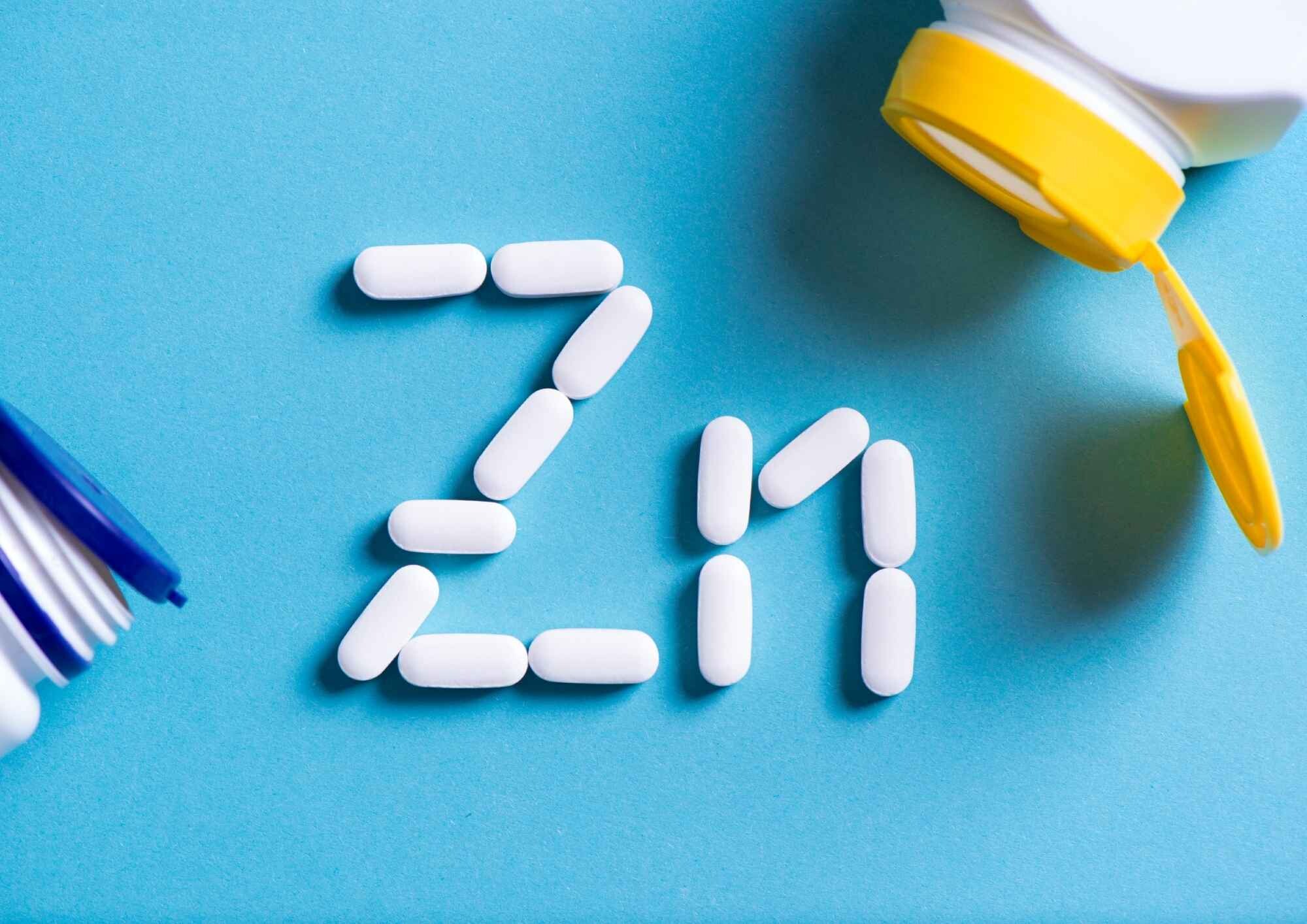 Zink reduziert nachweislich die Krankheitsdauer – Was sagt die Wissenschaft?Zink kann mehr als nur das Immunsystem stärken. Studien zeigen, dass es die Dauer von Erkältungen spürbar verkürzen kann.
Zink reduziert nachweislich die Krankheitsdauer – Was sagt die Wissenschaft?Zink kann mehr als nur das Immunsystem stärken. Studien zeigen, dass es die Dauer von Erkältungen spürbar verkürzen kann. -
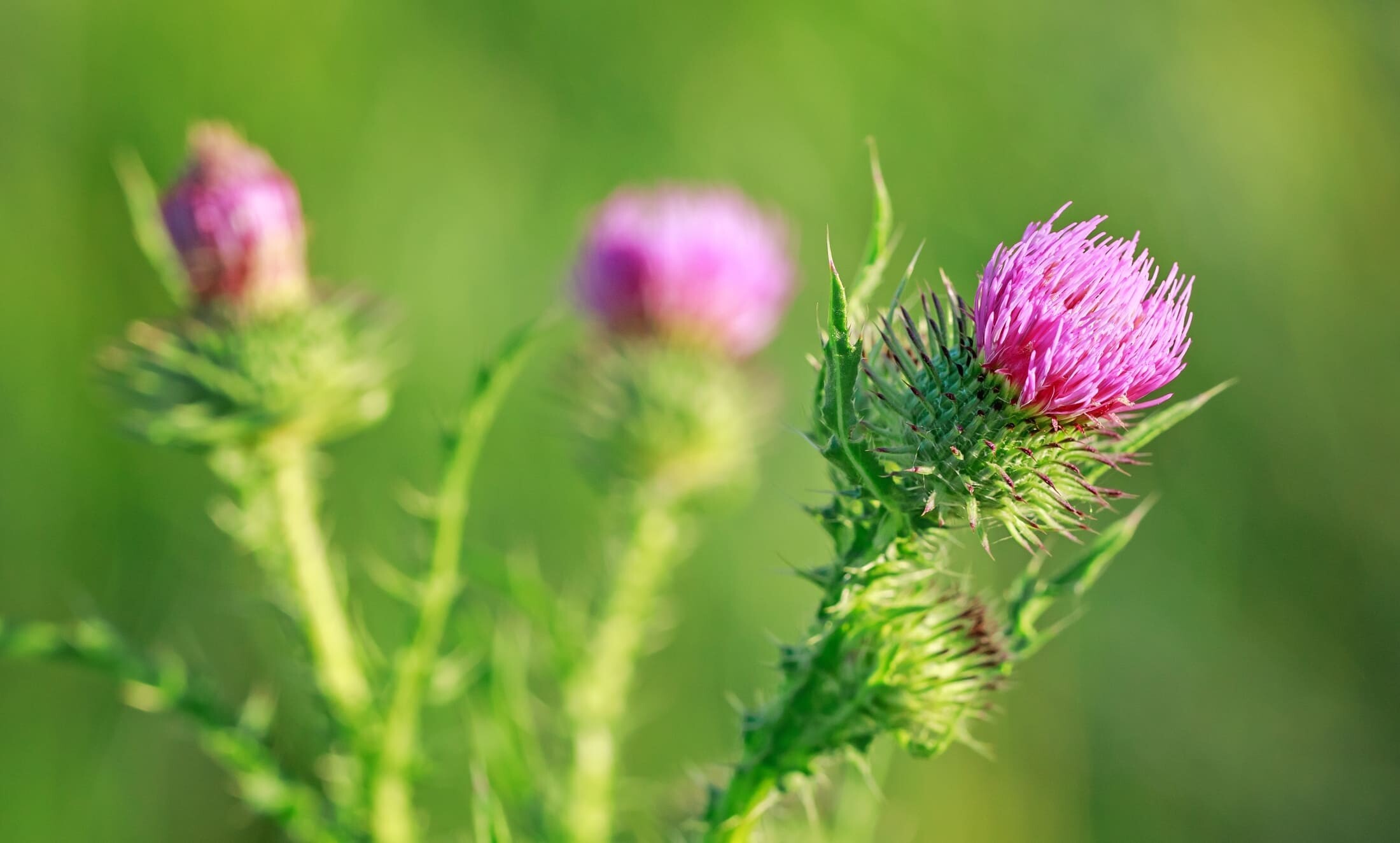 Milk thistle: effect on liver health and detoxificationHow does milk thistle really protect our liver? Find out how silymarin neutralizes free radicals, supports detoxification and what studies say about its effect on fatty liver, hepatitis & co. Find out more now!
Milk thistle: effect on liver health and detoxificationHow does milk thistle really protect our liver? Find out how silymarin neutralizes free radicals, supports detoxification and what studies say about its effect on fatty liver, hepatitis & co. Find out more now! -
 Menopause is not a disease: everything women (and men) should knowHalf of humanity is affected by the menopause. The PRO issue of Health Nerds is all about facts, myths and tips about the menopause.
Menopause is not a disease: everything women (and men) should knowHalf of humanity is affected by the menopause. The PRO issue of Health Nerds is all about facts, myths and tips about the menopause. -
 Stoffwechsel anregen – Ein Guide für mehr Energie, Gesundheit und GewichtsverlustIn diesem Guide erfährst Du, wie Du mit gezielter Ernährung, Bewegung, Schlaf, Stressmanagement und Alltagstricks Deinen Kalorienverbrauch auf natürliche Weise steigerst.
Stoffwechsel anregen – Ein Guide für mehr Energie, Gesundheit und GewichtsverlustIn diesem Guide erfährst Du, wie Du mit gezielter Ernährung, Bewegung, Schlaf, Stressmanagement und Alltagstricks Deinen Kalorienverbrauch auf natürliche Weise steigerst. -
 Hypothyreose und Übergewicht – Aktuelle Erkenntnisse und DatenSchilddrüsenunterfunktion verlangsamt den Stoffwechsel und begünstigt Gewichtszunahme. Erfahre Symptome und Tipps zur Unterstützung Deines Körpers.
Hypothyreose und Übergewicht – Aktuelle Erkenntnisse und DatenSchilddrüsenunterfunktion verlangsamt den Stoffwechsel und begünstigt Gewichtszunahme. Erfahre Symptome und Tipps zur Unterstützung Deines Körpers. -
 Elektrolyte – Die unsichtbaren Regisseure unseres KörpersElektrolyte steuern lebenswichtige Prozesse wie Muskelarbeit, Nervenfunktion und Flüssigkeitshaushalt. Erfahre, warum sie für Gesundheit und Leistung so entscheidend sind.
Elektrolyte – Die unsichtbaren Regisseure unseres KörpersElektrolyte steuern lebenswichtige Prozesse wie Muskelarbeit, Nervenfunktion und Flüssigkeitshaushalt. Erfahre, warum sie für Gesundheit und Leistung so entscheidend sind. -
 Zink reduziert nachweislich die Krankheitsdauer – Was sagt die Wissenschaft?Zink kann mehr als nur das Immunsystem stärken. Studien zeigen, dass es die Dauer von Erkältungen spürbar verkürzen kann.
Zink reduziert nachweislich die Krankheitsdauer – Was sagt die Wissenschaft?Zink kann mehr als nur das Immunsystem stärken. Studien zeigen, dass es die Dauer von Erkältungen spürbar verkürzen kann. -
 Milk thistle: effect on liver health and detoxificationHow does milk thistle really protect our liver? Find out how silymarin neutralizes free radicals, supports detoxification and what studies say about its effect on fatty liver, hepatitis & co. Find out more now!
Milk thistle: effect on liver health and detoxificationHow does milk thistle really protect our liver? Find out how silymarin neutralizes free radicals, supports detoxification and what studies say about its effect on fatty liver, hepatitis & co. Find out more now! -
 Menopause is not a disease: everything women (and men) should knowHalf of humanity is affected by the menopause. The PRO issue of Health Nerds is all about facts, myths and tips about the menopause.
Menopause is not a disease: everything women (and men) should knowHalf of humanity is affected by the menopause. The PRO issue of Health Nerds is all about facts, myths and tips about the menopause. -
 Stoffwechsel anregen – Ein Guide für mehr Energie, Gesundheit und GewichtsverlustIn diesem Guide erfährst Du, wie Du mit gezielter Ernährung, Bewegung, Schlaf, Stressmanagement und Alltagstricks Deinen Kalorienverbrauch auf natürliche Weise steigerst.
Stoffwechsel anregen – Ein Guide für mehr Energie, Gesundheit und GewichtsverlustIn diesem Guide erfährst Du, wie Du mit gezielter Ernährung, Bewegung, Schlaf, Stressmanagement und Alltagstricks Deinen Kalorienverbrauch auf natürliche Weise steigerst. -
 Hypothyreose und Übergewicht – Aktuelle Erkenntnisse und DatenSchilddrüsenunterfunktion verlangsamt den Stoffwechsel und begünstigt Gewichtszunahme. Erfahre Symptome und Tipps zur Unterstützung Deines Körpers.
Hypothyreose und Übergewicht – Aktuelle Erkenntnisse und DatenSchilddrüsenunterfunktion verlangsamt den Stoffwechsel und begünstigt Gewichtszunahme. Erfahre Symptome und Tipps zur Unterstützung Deines Körpers. -
 Elektrolyte – Die unsichtbaren Regisseure unseres KörpersElektrolyte steuern lebenswichtige Prozesse wie Muskelarbeit, Nervenfunktion und Flüssigkeitshaushalt. Erfahre, warum sie für Gesundheit und Leistung so entscheidend sind.
Elektrolyte – Die unsichtbaren Regisseure unseres KörpersElektrolyte steuern lebenswichtige Prozesse wie Muskelarbeit, Nervenfunktion und Flüssigkeitshaushalt. Erfahre, warum sie für Gesundheit und Leistung so entscheidend sind. -
 Zink reduziert nachweislich die Krankheitsdauer – Was sagt die Wissenschaft?Zink kann mehr als nur das Immunsystem stärken. Studien zeigen, dass es die Dauer von Erkältungen spürbar verkürzen kann.
Zink reduziert nachweislich die Krankheitsdauer – Was sagt die Wissenschaft?Zink kann mehr als nur das Immunsystem stärken. Studien zeigen, dass es die Dauer von Erkältungen spürbar verkürzen kann. -
 Milk thistle: effect on liver health and detoxificationHow does milk thistle really protect our liver? Find out how silymarin neutralizes free radicals, supports detoxification and what studies say about its effect on fatty liver, hepatitis & co. Find out more now!
Milk thistle: effect on liver health and detoxificationHow does milk thistle really protect our liver? Find out how silymarin neutralizes free radicals, supports detoxification and what studies say about its effect on fatty liver, hepatitis & co. Find out more now!
Empfohlene Produkte
Holistic support for bones, joints, muscles & skin
For your well-being – inside and outEssential Vitamin for Eyes, Skin, and Immune System
High-Dose Support for Cells & Immune DefenseFor your universal protection
As one of the most valuable proteins in the body, lactoferrin is a natural component of the immune system.For your iron balance
Specially formulated for your iron balance with plant-based curry leaf iron, Lactoferrin CLN®, and natural Vitamin C from rose hips.Holistic support for bones, joints, muscles & skin
For your well-being – inside and outEssential Vitamin for Eyes, Skin, and Immune System
High-Dose Support for Cells & Immune DefenseFor your universal protection
As one of the most valuable proteins in the body, lactoferrin is a natural component of the immune system.For your iron balance
Specially formulated for your iron balance with plant-based curry leaf iron, Lactoferrin CLN®, and natural Vitamin C from rose hips.Holistic support for bones, joints, muscles & skin
For your well-being – inside and outEssential Vitamin for Eyes, Skin, and Immune System
High-Dose Support for Cells & Immune DefenseFor your universal protection
As one of the most valuable proteins in the body, lactoferrin is a natural component of the immune system.For your iron balance
Specially formulated for your iron balance with plant-based curry leaf iron, Lactoferrin CLN®, and natural Vitamin C from rose hips.Holistic support for bones, joints, muscles & skin
For your well-being – inside and outEssential Vitamin for Eyes, Skin, and Immune System
High-Dose Support for Cells & Immune DefenseFor your universal protection
As one of the most valuable proteins in the body, lactoferrin is a natural component of the immune system.For your iron balance
Specially formulated for your iron balance with plant-based curry leaf iron, Lactoferrin CLN®, and natural Vitamin C from rose hips.

